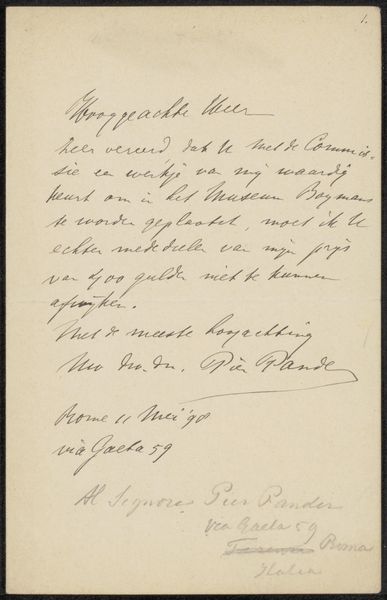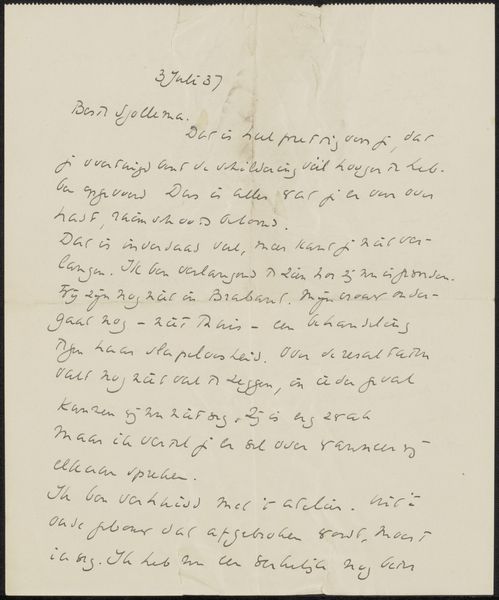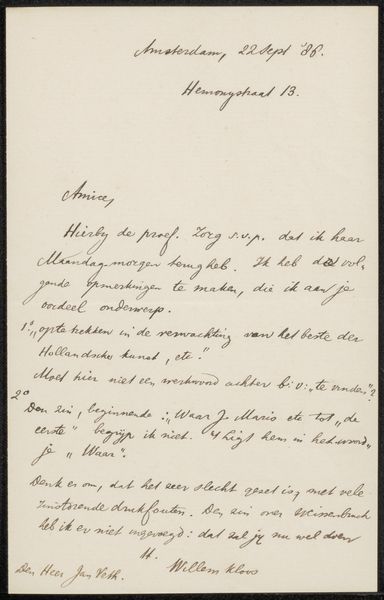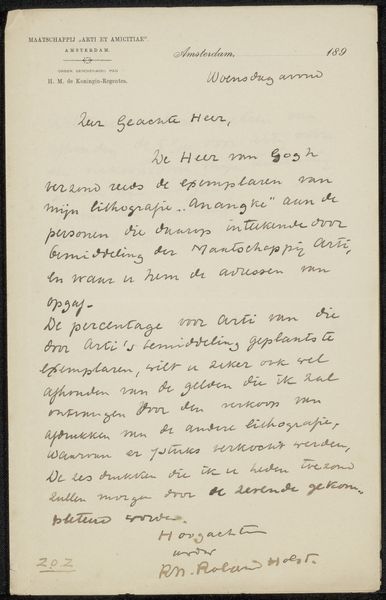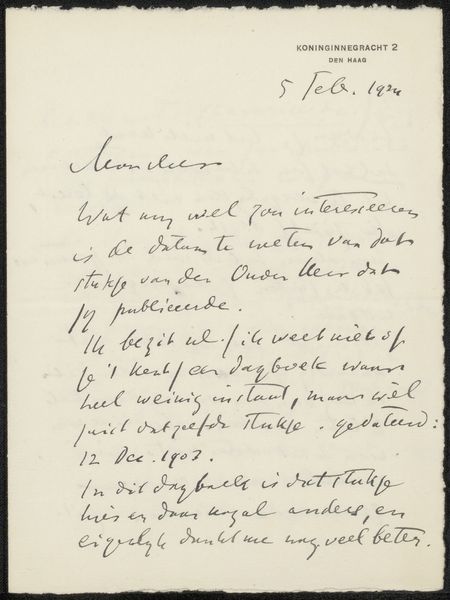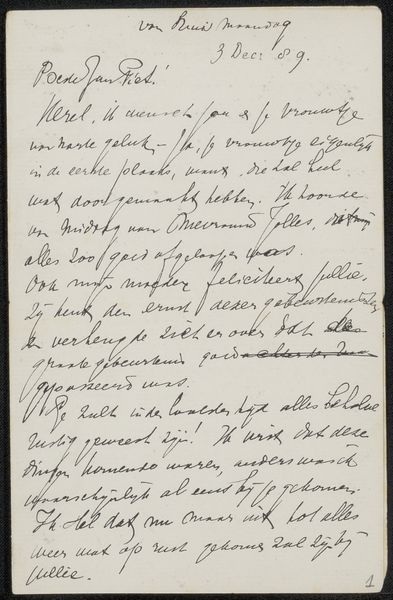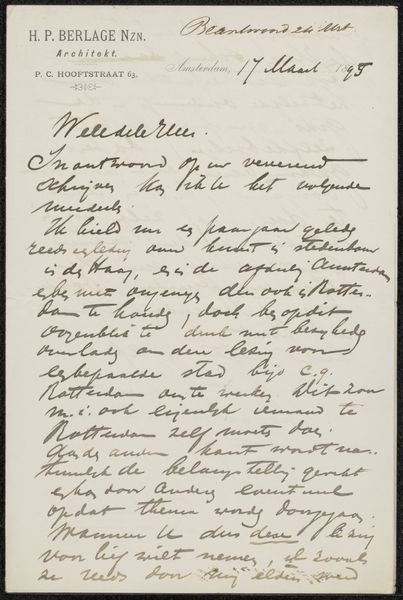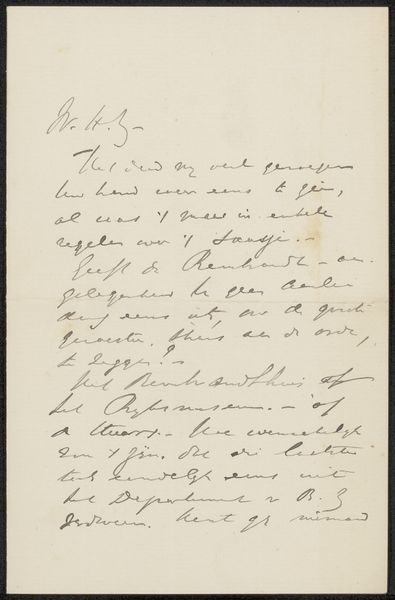
drawing, paper, ink, pen
#
drawing
#
hand-lettering
#
old engraving style
#
hand drawn type
#
hand lettering
#
paper
#
personal sketchbook
#
ink
#
hand-drawn typeface
#
ink drawing experimentation
#
pen-ink sketch
#
pen work
#
sketchbook drawing
#
pen
Copyright: Rijks Museum: Open Domain
Curator: Here we have "Brief aan Philip Zilcken" a letter by Cyriel Buysse, probably written around 1905. It's an ink drawing on paper, really more of a carefully penned note, isn't it? Editor: It has a casual air. You feel like you're intruding on a private exchange, which, of course, you are! I'm immediately drawn to the slightly shaky, beautiful script. It feels fragile and deeply human, so distant from our current mode of impersonal, instant communication. Curator: It does give us a sense of immediacy. Buysse wrote this letter to Zilcken from The Hague. Zilcken was a prominent figure in the art world at the time. Considering this, the letter functions as a kind of document of artistic networks and invitations of the time. The "Den Haag, 11 Laan v. Meerdervoort," establishes not just place, but class, respectability, almost a rootedness. Editor: Absolutely, it's more than just text; it's the tangible impression of Buysse himself – his hopes, his civility, even the subtle tremor in his hand as he asks a favor. It gives you chills because you think "this really happened". What the words communicate I don't even really care, it is about HOW he did it, how someone felt like they needed to communicate. Curator: Exactly! And we see the public role that handwriting took on in correspondence back then, acting almost as an index of the sender's character and intention. The postscript "P.S. de Rooselei de Jonghe kan misschien org." could also be very telling of the situation or urgency... Editor: To your point, even without knowing the context, you can sense the writer's personality: forthright and friendly, with that elegantly looped signature. Curator: Analyzing this piece is important because it provides an authentic connection to the fin-de-siècle art world. We get insight into how relationships among artists and influencers were negotiated. It helps humanize what can often be an abstract, historical movement. Editor: Yes, I think for me it sparks an imaginative reflection on presence. And that such fleeting encounters, rendered in delicate ink on paper, become preserved for us like little frozen moments.
Comments
No comments
Be the first to comment and join the conversation on the ultimate creative platform.
